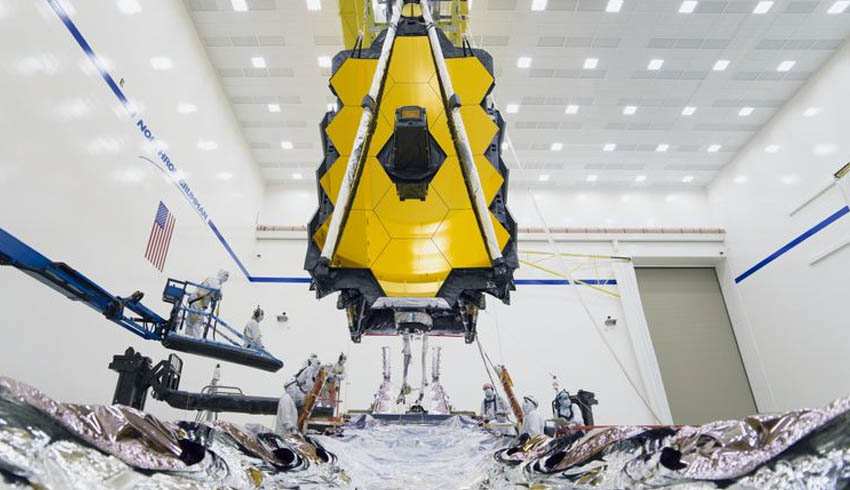The decision is based on a recently completed schedule risk assessment of the remaining integration and test activities prior to launch – previously, the Webb telescope was targeted to launch in March 2021.
As schedule margins grew tighter last fall, the agency planned to assess the progress of the project in April. This assessment was postponed due to the pandemic and was completed this week.
Thomas Zurbuchen, associate administrator for NASA’s Science Mission Directorate at the agency’s headquarters in Washington explained, "The perseverance and innovation of the entire Webb Telescope team has enabled us to work through challenging situations we could not have foreseen on our path to launch this unprecedented mission."
Testing of the observatory continues to go well at Northrop Grumman, the mission’s main industry partner, in Redondo Beach, California, despite the challenges of the coronavirus pandemic.
Prior to the pandemic’s associated delays, the team made significant progress in achieving important milestones to prepare for launch in 2021.
"Webb is the world’s most complex space observatory, and our top science priority, and we’ve worked hard to keep progress moving during the pandemic. The team continues to be focused on reaching milestones and arriving at the technical solutions that will see us through to this new launch date next year," Zurbuchen said.
The factors contributing to the decision to move the launch date include the impacts of augmented safety precautions, reduced on-site personnel, disruption to shift work, and other technical challenges. Webb will use existing program funding to stay within its $8.8 billion development cost cap.
Gregory Robinson, NASA Webb program director at the agency’s headquarters said, "Based on current projections, the program expects to complete the remaining work within the new schedule without requiring additional funds.
The project team will continue to complete a final set of extremely difficult environmental tests of the full observatory before it will be shipped to the launch site in Kourou, French Guiana, situated on the north-eastern coast of South America.
Early next year, Webb will be will folded “origami-style” for shipment to the launch site and fitted compactly inside Arianespace’s Ariane 5 launch vehicle fairing, which is about five metres wide.
"Although efficiency has been affected and there are challenges ahead, we have retired significant risk through the achievements and good schedule performance over the past year. After resuming full operations to prepare for upcoming final observatory system-level environmental testing this summer, major progress continues towards preparing this highly complex observatory for launch," Robinson added.
On its journey to space, Webb will be the first mission to complete an intricate and technically challenging series of deployments – a critical part of Webb’s journey to its orbit about 1 million miles from Earth.
Eric Smith, NASA Webb’s program scientist at the agency’s headquarters, added, "Webb is designed to build upon the incredible legacies of the Hubble and Spitzer space telescopes, by observing the infrared universe and exploring every phase of cosmic history."
Once in orbit, Webb will unfold its delicate five-layered sunshield until it reaches the size of a tennis court. Webb will then deploy its iconic 6.5-metre primary mirror that will detect the faint light of far-away stars and galaxies.
"The observatory will detect light from the first generation of galaxies that formed in the early universe after the Big Bang and study the atmospheres of nearby exoplanets for possible signs of habitability," Smith said.
Webb is NASA’s next great space science observatory, which will help in solving the mysteries of our solar system, looking beyond to distant worlds around other stars, and probing the mystifying structures and origins of our universe. Webb is an international program led by NASA, along with its partners the European Space Agency and the Canadian Space Agency.

